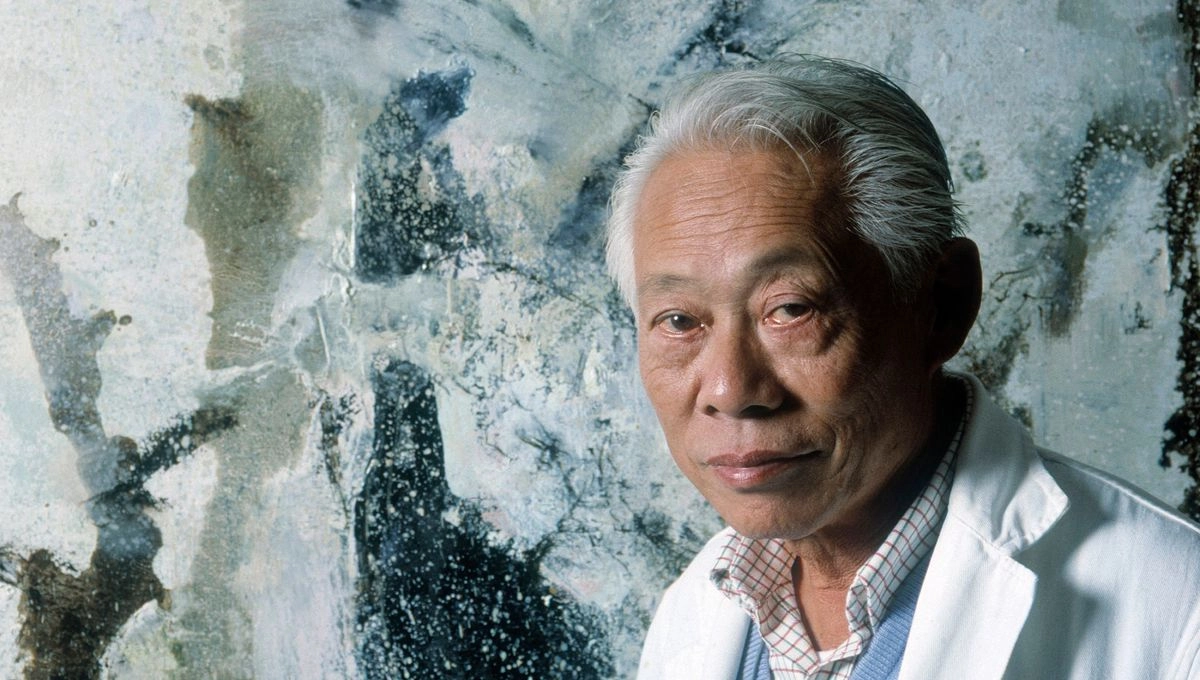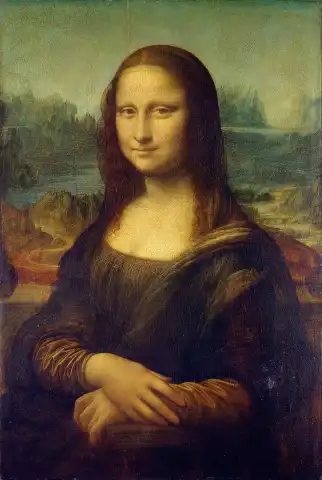Zao Wou-Ki : A Master of Lyrical Abstraction


Zao Wou-Ki was one of the greatest abstract painters and modern masters from China. Zao Wou-Ki stands as a titan in the realm of abstract art, a visionary whose unique blend of Chinese art and Western abstract art techniques has left an indelible mark on the art world. Born in China, he later embarked on a journey to Paris, where he immersed himself in the vibrant European art scene, ultimately forging a distinctive style that resonated deeply with viewers. In Paris, where the Galerie de France organised annual solo exhibitions of Zao's work, the artist mingled with Lyrical Abstraction artists including Pierre Soulages, Alfred Manessier, Hans Hartung, and Georges Mathieu. In 1949, he participated in the joint exhibition “Huit oeuvres Nouvelles” (Eight New Works) together with Jean Dubuffet, Jean Fautrier, Maria Martins, and Wols.
Lyrical Abstraction: A Poetic Approach
Painting, poetry, literature and music always played an important role in his creative process and he was in constant dialogue with his friends, including Henri Michaux, Edgar Varèse, Pierre Soulages, François Cheng, René Char, Claude Roy, Alberto Giacometti, Bernard Noël, Pierre Matisse, André Malraux and the architect Ieoh Ming Pei. His signature technique involved layering oil paint to create textures reminiscent of Chinese calligraphy, with a nod to the gestural intensity of artists like Paul Klee Zao enjoyed collaborating with artists across a range of disciplines. Zao Wou-Ki's works are often categorized as lyrical abstraction, a style that transcends mere visual representation and delves into the realm of emotion and sensation. Unlike some abstract art examples that prioritize pure form and color, lyrical abstraction seeks to evoke feelings, much like poetry or music. In 1946, his abstract painting debuted in “Salon des moins de 30 ans”(Salon for the under 30s) in Paris, attracting considerable attention. In Zao Wou-Ki's paintings, you'll witness a harmonious interplay of lines, colors, and textures that dance across the canvas, creating a sense of movement, fluidity, and profound emotion. The artist's brushstrokes are not merely applied, but rather imbued with a sense of urgency and spontaneity, capturing the ephemeral nature of thought and feeling.
Exploring Abstract Art Ideas
Zao Wou-Ki's artistic journey was a fascinating blend of Eastern and Western influences. He drew profound inspiration from the rich tapestry of Chinese art, particularly the works of traditional Chinese artists and their masterful ink wash paintings. He used watercolor as a means to explore technique, color, and form, without the need to develop oil paintings from these works. This influence is evident in his nuanced use of ink, his emphasis on the expressive power of the line, and his deep appreciation for the concept of "qi" (life force), an essential element in Chinese philosophy that embodies the energy and vitality of all things. Zao Wou-Ki sought to capture this "qi" within his abstract compositions, imbuing them with a sense of dynamism and inner life. His pioneering style achieved an expressive depth that stands in marked contrast to that of many other abstract artists of his time. Characterised by sweeping brushstrokes and expressive use of color, Zao's abstract landscapes evoke a sense of expansiveness.
Abstract Art with Meaning
While Zao Wou-Ki's paintings may initially appear as abstract expressions, they are imbued with deep meaning and symbolism. His painting, with its perfect balance between Western abstraction and Chinese pictorial tradition, is a celebration of light, movement and silence. He often explored profound themes such as nature, spirituality, and the passage of time. The vibrant colors and dynamic compositions in his abstract art paintings evoke a sense of wonder and awe, inviting viewers on a contemplative journey and encouraging introspection. For example, his use of vibrant reds and oranges might evoke the fiery energy of the sun, while his sweeping lines might represent the flow of a river or the ebb and flow of emotions.
Zao Wou-Ki: A Master of Chinese Art Influences
At the age of fourteen, he entered the Hangzhou Academy of Fine Arts, where he studied traditional Chinese paintings and Western painting for six years. His interest quickly shifted to Western painting through reproductions of Cézanne, Picasso, and Matisse, which he discovered in 1940 thanks to postcards from Paris brought back by his uncle and works published in Western magazines. Educated at the Hangzhou School of Fine Arts, he was influenced by both Chinese painting techniques and Western art movements. Zao Wou-Ki's Chinese heritage profoundly shaped his artistic vision. He incorporated traditional Chinese techniques, such as the expressive use of ink and the emphasis on the void, into his abstract compositions. The concept of "negative space," or the empty areas surrounding the forms, is a key element in many of his works. By embracing the void, Zao Wou-Ki created a sense of spaciousness and allowed the viewer's gaze to wander and explore the depths of the painting. This unique fusion of East and West resulted in a style that was both deeply personal and profoundly universal.
Abstract Art on Canvas: A Visual Symphony
Zao Wou-Ki was a master of working with abstract art on canvas. He often employed large-scale canvases, allowing his compositions to breathe and expand, creating an immersive experience for the viewer. His brushstrokes were bold and confident, imbued with a sense of urgency and spontaneity. He experimented with a range of media, including oil paint, ink, and mixed media, constantly pushing the boundaries of abstract art techniques and exploring new avenues of artistic expression. He often layered colors, creating a sense of depth and luminosity, and sometimes incorporated collage elements to add texture and dimension to his works.
Abstract Art Wall Decor: Bringing Art to Life
Zao Wou-Ki's works are highly sought-after as abstract art wall decor. Their vibrant colors and dynamic compositions can transform any space, adding a touch of sophistication and elegance. Whether you're an avid art collector or simply seeking to infuse your home with a unique and inspiring piece, a Zao Wou-Ki painting can be a truly transformative addition. Placing a Zao Wou-Ki work in a prominent location can serve as a daily source of inspiration and a conversation starter, inviting viewers to contemplate the artist's vision and the deeper meaning embedded within the abstract forms. The sighted artist shows how much he sees behind the invisible of the abstract” - Dominique de Villepin Yann Hendgen, art historian and former assistant to Zao, explained in 2010 on Canal Académie: "Zao Wou-Ki loves the play of water and reflections.
Abstract Art Drawing Ideas: Finding Inspiration
Zao Wou-Ki's work can serve as a valuable source of inspiration for aspiring artists. By studying his techniques and exploring his artistic philosophy, you can gain valuable insights into the creative process. Experiment with different media, embrace the power of the line and allow your emotions to guide your brushstrokes. You never know what kind of abstract art drawing ideas might emerge as you delve into the world of abstract expression. Try experimenting with different mark-making techniques, such as dripping, splattering, and layering, to create unique textures and effects. Remember, the goal is not to replicate Zao Wou-Ki's style but to use his work as a springboard for your own artistic exploration and self-discovery.
Conclusion
Zao Wou-Ki was a true visionary, a master of lyrical abstraction who seamlessly blended Eastern and Western artistic traditions. His abstract art paintings continue to captivate audiences worldwide, offering a glimpse into the depths of human emotion and the mysteries of the universe. By exploring the works of this extraordinary artist, we can gain a deeper appreciation for the power and beauty of abstract art and its ability to transcend cultural boundaries and speak to the universal human experience.
Subscribe to our newsletter to get updated and enjoy a 10% voucher
Apr 26 2024 / Biography Art History



